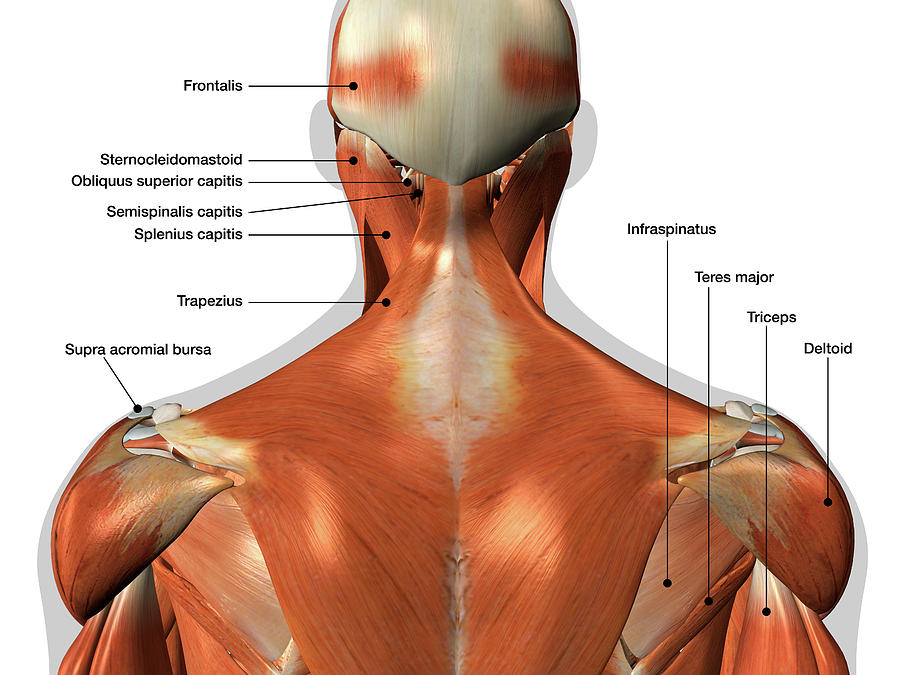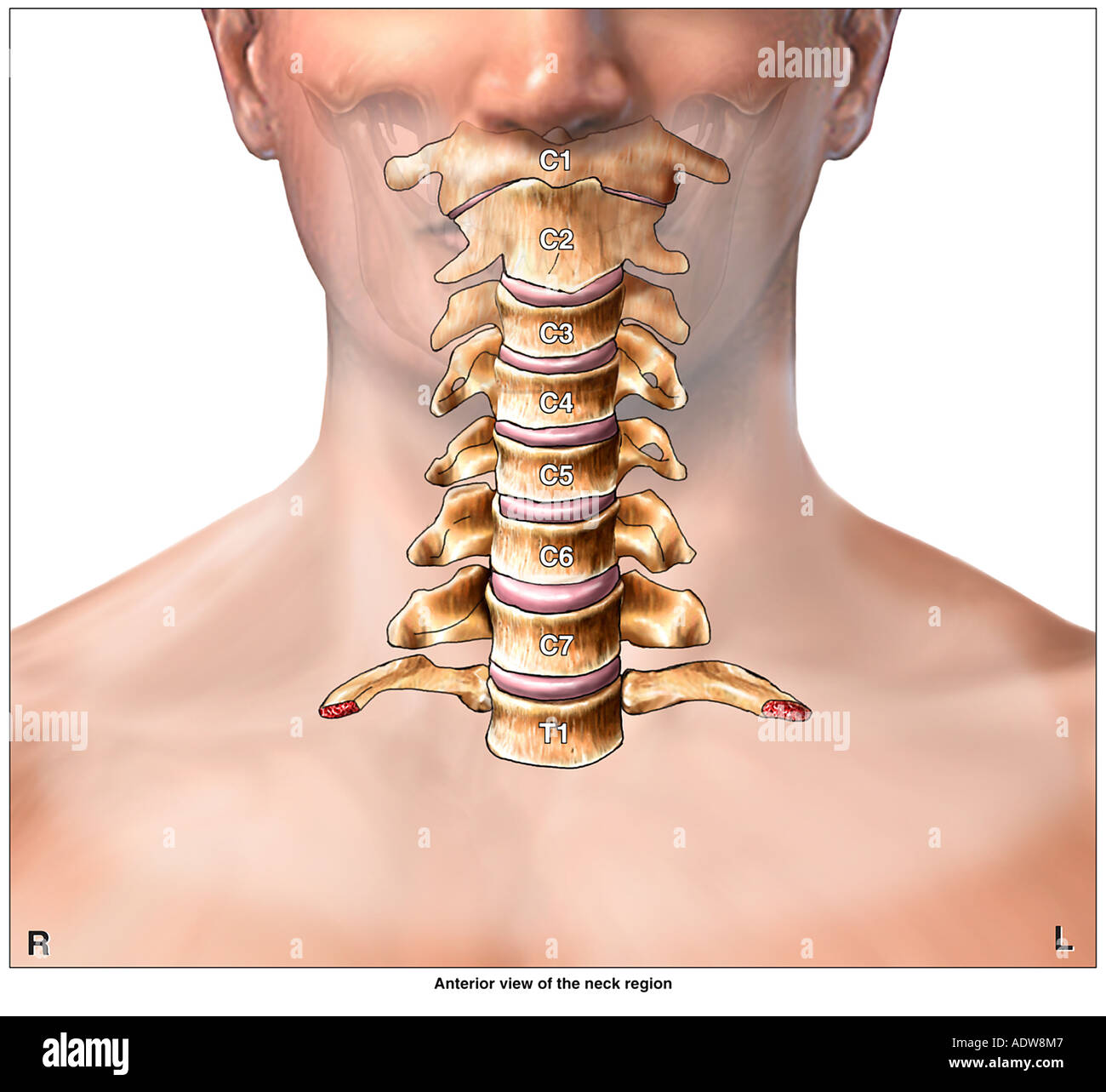Back Of Neck Region Anatomy. Topographically, it is located under the zygomatic ramus (zygomatic arch) and the. Because the structures in the neck region are very close to each other, there are many fasciae that ensheath and separate (compartmentalize) the different structures. This article describes the anatomy of the head and neck of the human body, including the brain, bones, muscles, blood vessels, nerves, glands, nose, mouth, teeth, tongue, and throat. In anatomy, the neck is also called by its latin names, cervix or collum, although when used alone, in context, the word cervix more the word neck is sometimes used as a convenience to refer to the region behind the head in some snails, gastropod mollusks, even though. Just like on a map, a region refers to a certain area. It is therefore essential that you are able to competently perform neck lump examination. In the front, the neck extends from the bottom part of the mandible (lower jaw bone) to the bones of the upper chest and shoulders (including the sternum and collar bones). Join our newsletter and receive our free ebook:
The back of the neck is mostly comprised of muscles, as. In the front, the neck extends from the bottom part of the mandible (lower jaw bone) to the bones of the upper chest and shoulders (including the sternum and collar bones). Neck, in land vertebrates, the portion of the body joining the head to the shoulders and chest. ⌊ posterior regions of the arms. The body is divided into the axial body runs right down the center (axis) and consists of everything except the limbs, meaning the head, neck, thorax (chest and back), abdomen.

Boundaries superior - a line joining inferior border of mandible, angle of mandible, tip of mastoid process, superior nuchal line and external occipital protuberance slideshow 1345964 by.
Parotideomasseteric region and buccal region. The back of the neck is mostly comprised of muscles, as. Regions of the head and neck: This article describes the anatomy of the head and neck of the human body, including the brain, bones, muscles, blood vessels, nerves, glands, nose, mouth, teeth, tongue, and throat. This back section of the gray matter region connects with the posterior nerve root and receives sensory signals, such as for. Head and neck anatomy is important when considering pathology affecting the same area. ⌊ posterior regions of the arms. Neck is a cylindrical part that joins the head to the trunk (thorax). The head rests on the top part of the vertebral column, with the skull joining at c1. Detailed description of cervical spine anatomy: Some areas of the body take the names of the most important bone in the region. The physicians originally studying human anatomy thought the skull looked like an helmet.
In the front, the neck extends from the bottom part of the mandible (lower jaw bone) to the bones of the upper chest and shoulders (including the sternum and collar bones). Head and neck anatomy is important when considering pathology affecting the same area. From the sides and the back of the neck, the splenius capitis inserts onto the head region, and the splenius. Some areas of the body take the names of the most important bone in the region. Parts and regions of the neck. Guide to mastering the study of anatomy. Many conditions and injuries can affect the back.

This article discusses the spinal cord's anatomy and potential signs and symptoms that can develop if cord compression or injury occurs at the level of the posterior (dorsal) horn.
Boundaries superior - a line joining inferior border of mandible, angle of mandible, tip of mastoid process, superior nuchal line and external occipital protuberance slideshow 1345964 by. Lumps in the neck are relatively common and although the majority are benign in nature, they can sometimes be the first signs of more sinister pathology (e.g. ⌊ posterior regions of the arms. The weight, connections and movements of the head are supported by. Topographically, it is located under the zygomatic ramus (zygomatic arch) and the. .anatomy or pathology leans on pathologic anatomy, the anatomic information necessary for the practice of regional anesthesia must be specific to this application. The anterior jugular vein (v. The neck is a complex anatomic region between the head and the body. In anatomy, the neck is also called by its latin names, cervix or collum, although when used alone, in context, the word cervix more the word neck is sometimes used as a convenience to refer to the region behind the head in some snails, gastropod mollusks, even though. The anatomical regions (shown) compartmentalize the human body. Head and neck anatomy is important when considering pathology affecting the same area. Neck is a cylindrical part that joins the head to the trunk (thorax). Guide to mastering the study of anatomy. The anatomical basis of clinical practice. Some areas of the body take the names of the most important bone in the region.
⌊ posterior regions of the arms. Surface anatomy of the human body, front. Whiplash associated disorders and neck rehabilitation review whiplash and the related. 46:18 next medico mbbs classes by biomentors 2 593 просмотра. Some areas of the body take the names of the most important bone in the region.

It also covers some common conditions and injuries that can affect the.
The back of the neck is mostly comprised of muscles, as. Jugularis anterior) begins near the hyoid bone by the confluence of several superficial veins from the submaxillary region. Parotideomasseteric region and buccal region. This article describes the anatomy of the head and neck of the human body, including the brain, bones, muscles, blood vessels, nerves, glands, nose, mouth, teeth, tongue, and throat. Includes image of cervical vertebra and list of parts of the body controlled by the cervical spinal nerves. Superficial dissection of the back of the neck. In anatomy, the neck is also called by its latin names, cervix or collum, although when used alone, in context, the word cervix more the word neck is sometimes used as a convenience to refer to the region behind the head in some snails, gastropod mollusks, even though. Join our newsletter and receive our free ebook: In the front, the neck extends from the bottom part of the mandible (lower jaw bone) to the bones of the upper chest and shoulders (including the sternum and collar bones). The splenius muscles originate at the midline and run laterally and superiorly to their insertions. Regions of the head and neck: The anatomical regions (shown) compartmentalize the human body.
Detailed description of cervical spine anatomy: back of neck anatomy. It also covers some common conditions and injuries that can affect the.
Posting Komentar untuk "Back Of Neck Region Anatomy"